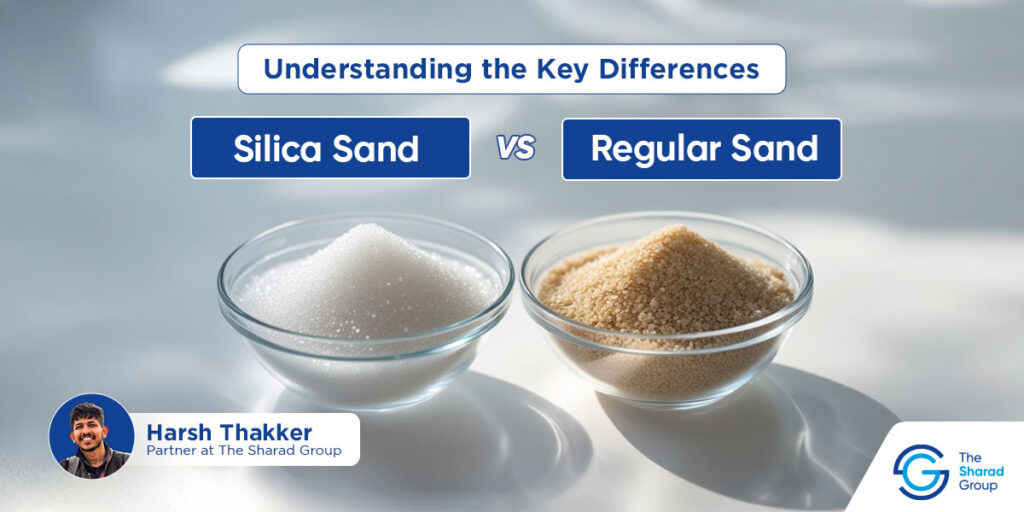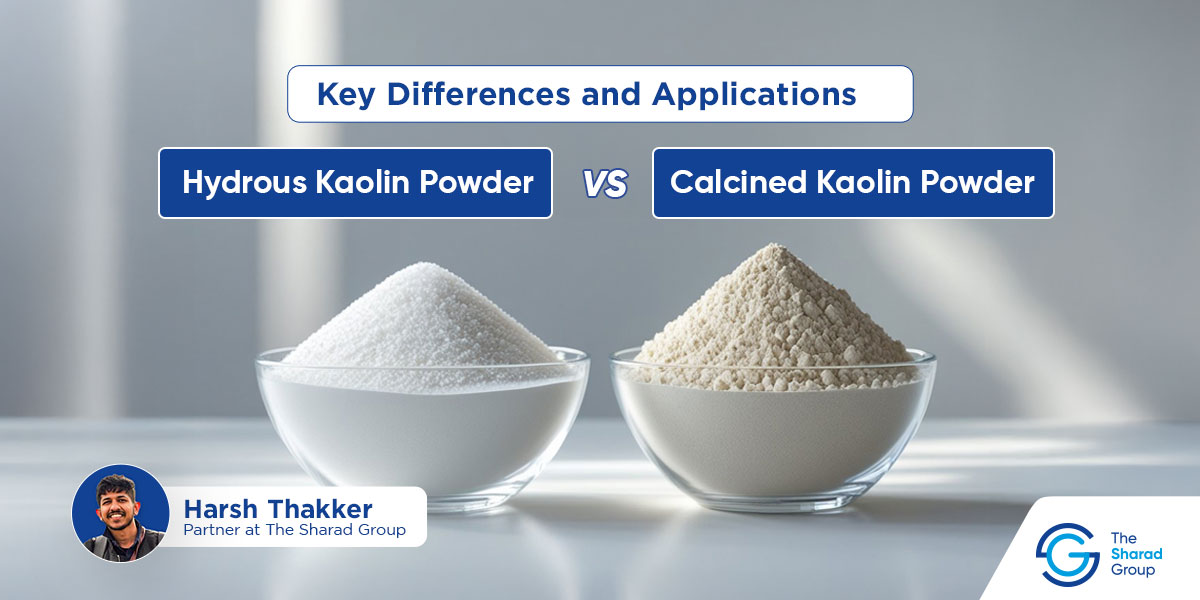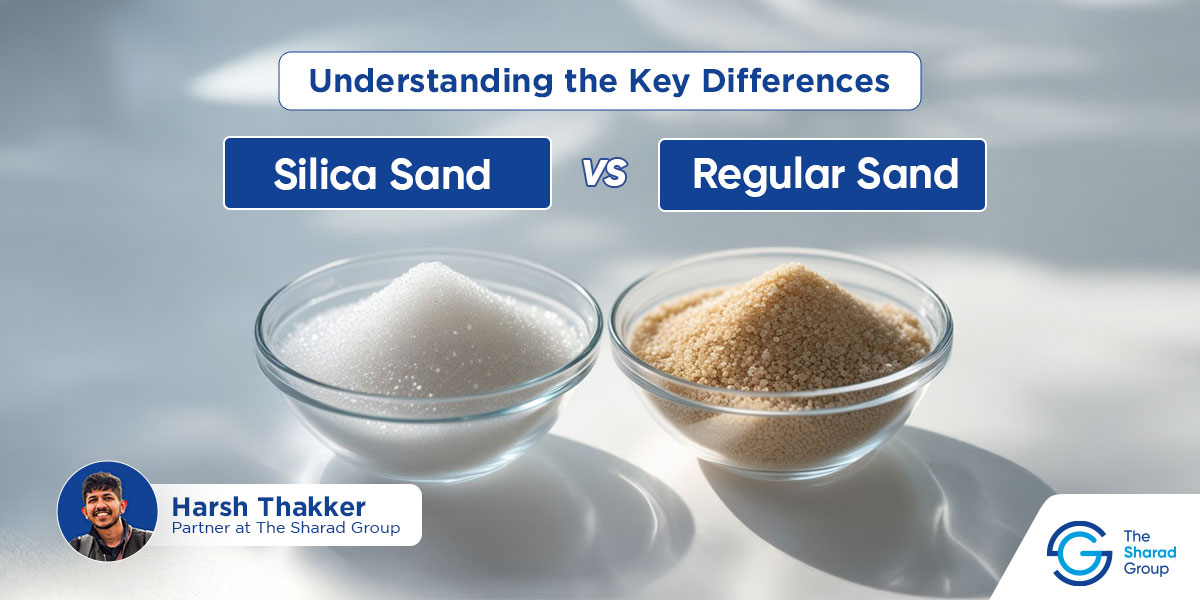Silica sand and regular sand.
They’re two types of the same chemical substance, but with vastly different origin stories, chemical composition, natural properties, and industry applications.
However, they both have some overlapping applications.
For example, both of them can be used on golf courses and in landscaping.
But, they can never be replaced by each other when it comes to foundry, construction, glass-making, or other industrial applications.
But why is this the case?
How are these two sands different?
And which one is right for you?
That’s exactly what I’m going to help you find out through this blog.
Let’s dive in!
Silica Sand vs Regular Sand: Table of Contents
- TL;DR: Table of Difference Between Silica Sand and Regular Sand
- What is Silica Sand?
- What is Regular Sand?
- Main Differences Between Silica Sand and Regular Sand
- The Sharad Group: Your Steady Sand Supplier in India
- Silica Sand vs Regular Sand: FAQs
TL;DR: Table of Difference Between Silica Sand and Regular Sand
In a hurry to find out which sand is right for you? No problem!
Here’s a complete breakdown of the key differences between Silica Sand and Regular Sand:
| Factor | Silica Sand | Regular Sand |
| Composition | ≥95% SiO₂ (Silicon Dioxide) | Mixed minerals (quartz, feldspar, clay) |
| Purity | Highly refined, low impurities | Contains organic matter & other minerals |
| Color | White or off-white | Tan, brown, or reddish |
| Grain Shape | Rounded to angular, uniform size | Irregular, varied sizes |
| Uses | Glass, ceramics, foundries, and water filtration | Construction, landscaping, and concrete production |
| Chemical Resistance | Highly inert, resists acids/alkalis | Reactive due to impurities |
| Formation | Formed from weathered quartz rocks | Formed from eroded rocks & minerals |
| Melting Point | Very high (~1,713°C or 3,115°F) due to pure SiO₂ content | Lower (~1,200-1,450°C or 2,192-2,642°F) |
| Thermal Stability | Retains structural integrity at extreme temperatures | May crack, fuse, or degrade under prolonged high heat |
What's on this page:
ToggleWhat is Silica Sand?
Silica sand is one of the most popular types of specialized sands that occurs naturally.
Most of the silica sand deposits found around the world have been formed naturally over millions of years. The formation involves a process of natural weathering and erosion of rocks rich in Quartz, like Granite.
When rain, wind, earthquakes, and other occurrences break down the quartz rocks into granular particles, they are deposited by water or wind into natural silica sand formations.
Today, we have the capability of identifying and processing naturally occurring silica sand through processes like washing, drying, and sieving.
Also Read: Quartz Sand vs. Silica Sand: What is the Difference?
This helps us remove impurities to make the most of silica sand properties that are beneficial to us. Let me briefly show you how silica sand is used around the world:
The Uses of Silica Sand
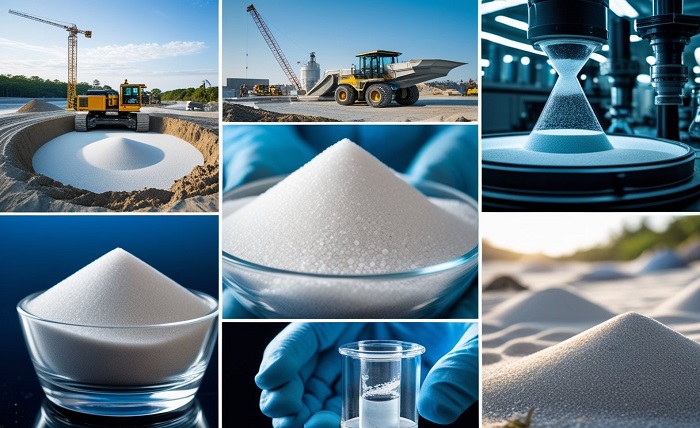
Silica sand is used as a primary and secondary raw material in the following industries:
- Manufacturing quality glass and glass objects.
- Ceramic production, to ensure consistent texture and durability.
- Hydraulic fracturing in fracking operations, as a proppant in oil extraction.
- Foundry casting to product moulds and core structures.
- Large-scale Water filtration systems to remove impurities at affordable costs.
Check out our blog on the Uses of Silica Sand to discover how your industry can also benefit from using quality Silica Sand supplies.
What is Regular Sand?
Regular sand is what we commonly see in sand pits, on beaches, and around other bodies of flowing water like rivers.
For this reason, you may also have heard it being referred to as “construction sand” or “river sand.”
It’s a mixture of different kinds of naturally occurring sands, containing various amounts of silica, feldspar, clay, and other minerals.
It has a much lower silica content compared to Silica sand, and can go down to as low as 70%! In fact, you can also often find organic materials mixed in regular sand along with inorganic minerals we have mentioned above.
Just like silica sand, regular sand has formed over millions of years of natural weathering. However, unlike silica sand, regular sand is the result of the erosion of sedimentary, igneous, and metamorphic rocks.
Let me quickly recap its major uses.
The Uses of Regular Sand
Regular sand undergoes minimal processing because it usually plays the role of a filler material. Simply put, it is preferred for its affordability and abundance rather than any specific chemical or physical property.
Its major uses include:
- In concrete & mortar production, to provide bulk and strength.
- Brick-Making as a binding agent.
- Landscaping in gardens, beaches, and golf courses.
- Road Construction as a base material.
- Beach Nourishment for coastal restoration projects.
As you can see, regular sand is used where scale is the priority rather than the visual or aesthetic appeal of the final product.
The only exception to this is golf courses. Even here, there are many instances where luxury golf courses prefer using silica sand rather than regular sand.
Next, let’s find out the major differences between regular and silica sand.
Main Difference Between Silica Sand and Regular Sand
There are five major differences between silica sand and regular sand. These include:
1. Composition
Silica sand contains more than 95% Silicon Dioxide content, making it extremely uniform in its chemical and physical composition. This is also an indication that it has formed by the weathering of quartz-rich rocks over millions of years.
Regular sand, on the other hand, contains mixed minerals: feldspar, clay, and quartz. This is why its silica content can go down to as low as 70%.
2. Purity
Silica sand is a naturally refined mineral. Plus, it is further refined to enhance its silica content by removing naturally occurring impurities. This means it is one of the purest minerals out there that play the role of primary and secondary raw materials in manufacturing processes.
Regular sand, as we’ve seen, is classified as such precisely because it contains “impurities” in the form of a mixture of minerals. Plus, it also contains organic matter apart from minerals and materials we’ve mentioned.
3. Color
Silica sand’s composition and chemical content give it a consistently white or off-white color. So, you can even roughly estimate the purity level of silica sand just by looking at it!
On the other hand, regular sand comes in several different colors: tan, brown, or reddish. In fact, it also has a color named all after itself: “sandy”! Again, it’s possible to estimate the minerals which are predominant in a mixture or type of naturally occurring sand.
4. Grain Shape
Silica sand grains are angular or rounded. However, they are largely uniform in size. This is what ensures the consistency of the products in which silica sand is used as a raw material.
Regular sand, on the other hand, has irregularly shaped grains, making it perfect for bulk or filler applications, where volume matters more than consistency.
6. Chemical Resistance
Silica sand is a highly inert material. This means it resists acids and alkalis. That’s why you may have seen it being used as a raw material to create high-quality kitchen countertops, glass manufacturing, and foundry castings.
Regular sand is not inert: in fact, since it contains a lot of impurities, it is highly reactive to different materials. However, its reactivity is also unpredictable since it largely depends on the chemical composition of a given sample of soil. In the case of regular soil, this varies, and therefore, so does its chemical resistance!
7. Heat Resistance
Heat resistance is the last category of comparison between the two types of sands.
Silica sand is highly heat resistant. It can bear temperatures of up to 1,713°C or 3,115°F due to the high level of silicon dioxide content in it. This is why silica sand is an essential raw material in the foundry, glass, and metallurgical industries.
Regular sand is also heat-resistant and can bear temperatures of up to 1,200-1,450°C or 2,192-2,642°F. However, it is liable to cracking due to its inconsistent chemical composition and irregular grain shape.
How to Choose Between Silica Sand vs Regular Sand?
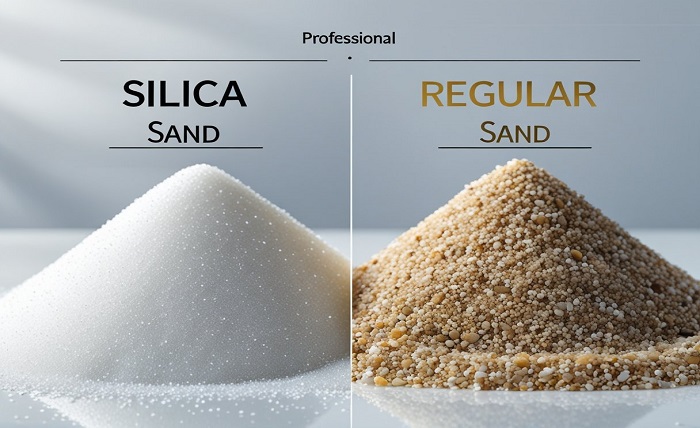
Now that you know the key differences between silica sand and regular sand, how do you decide which one is right for your project?
Here’s a five-step process you can use to define your requirements and choose the right option between silica sand and regular sand:
1. Check Your Industry & Application
As soon as you need purity, heat resistance, and chemical stability, you need silica sand! That’s why it should be your go-to if you’re in glass manufacturing, foundry casting, ceramics, or filtration.
Regular Sand is ideal for construction, landscaping, or concrete work. It’s your best option where affordability and bulk availability are more important than look or feel.
2. Assess Temperature Requirements
Need a material that can handle molten metal (1,600°C+)? Go with silica sand!
However, if you’re working on a low-heat project like road construction? Regular sand will do the job just fine and keep your project affordable.
3. Consider Chemical Exposure
If your project involves acids, alkalis, or reactive environments, such as water filtration or industrial coatings, silica sand’s inert nature makes it the safer choice.
For general-purpose use (e.g., mortar, bricks), regular sand works. However, I highly recommend testing the regular sand for impurities. It’ll help you ensure that the chemical composition of your regular soil won’t cause any damage to your product.
4. Evaluate Grain Consistency Needs
Need uniform grain size for aesthetic appeal or product consistency? Silica sand is what you need: it’s what ensures precision in glass, ceramics, and casting molds.
On the other hand, if non-uniform grains are acceptable because no one’s going to notice where you’re using the sand, regular sand will work just fine. This is why it is perfect for filler roles in concrete or landscaping.
5. Budget & Availability
Silica sand is pricier because mineral suppliers spend a lot of time and money refining it to perfect so that it meets industry standards.
That’s why it’s also non-negotiable for specialized applications. Plus, you can also get great deals by working with an experienced silica sand supplier who has access to cost-efficient supply chains.
Regular sand is cheaper and widely available. So, it should be your default option for large-scale construction.
The Sharad Group: Your Steady Silica Sand Supplier in India
Through this blog, I’ve shown you the differences between silica sand and regular sand. Both have different origins, applications, strengths and limitations.
While silica sand is rich in silicon, consistent in texture, and resistant to chemical reactions and heat, it is also more expensive.
Regular sand, on the other hand, is very cheap and abundantly available. However, it’s only suitable for bulk applications like construction, landscaping, and brick-making.
If you’re still not sure as to which sand is right for you, we suggest getting in touch with us at The Sharad Group.
With 60+ years of experience in mining, procuring, and shipping high-grade minerals like silica sand, we’ve successfully helped industry leaders get the right soil at the right time at the right price.
Connect with us, and we’ll help you understand which sand is right for your project and make sure that you get the right quantities of the right quality, every single time!
Silica Sand vs Regular Sand: FAQs
1. Is silica sand the same as regular sand?
No! Silica sand is ≥95% pure SiO₂, while regular sand is a mixed mineral blend (quartz, clay, feldspar) with only ~70% silica. You can think of silica sand as the “premium, refined” version or regular soil, formed over millions of years through the erosion of quartz-rich rocks.
2. Why is silica sand more expensive?
It’s highly processed to remove impurities, ensuring consistency for glass, foundries, and ceramics. Regular sand is cheaper because it’s unrefined and used mainly for bulk construction.
3. Can I use regular sand for glassmaking?
Absolutely not! Glass needs silica sand’s high purity and heat resistance (1,713°C+). Regular sand’s impurities would ruin the glass’s clarity and strength.
4. Which sand is better for landscaping?
Regular sand wins for cost and natural look. But luxury projects (e.g., golf courses) often use silica sand for its uniform texture and bright color.
5. How do I test sand quality?
For silica sand, check color (white/off-white) and grain uniformity. For regular sand, sieve tests and impurity checks matter. When in doubt, consult your supplier!

